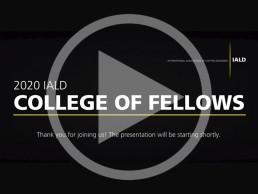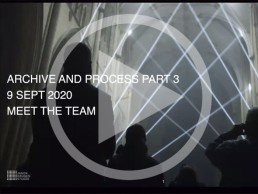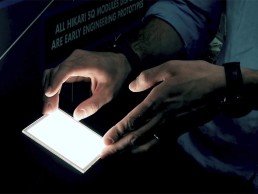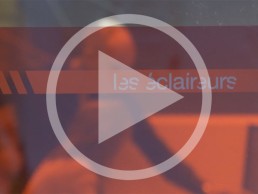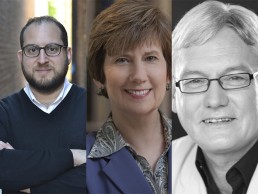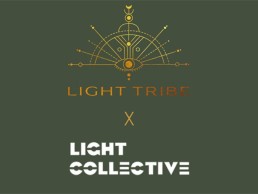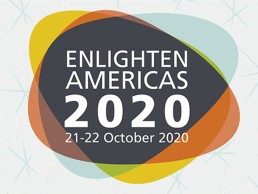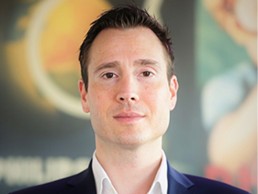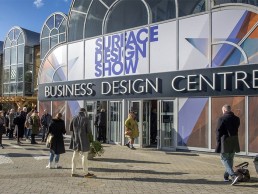Lightfair 2021 postponed to Fall
(USA) – Show rescheduled from May to 25-29 October 2021.
The IALD, IES and International Market Centers (IMC) have announced that LightFair 2021 has been postponed until October.
The event was initially scheduled to take place from 16-20 May at the Jacob K. Javits Center in New York, but has been moved back to the Fall, with new dates now falling on 25-29 October. The show will still take place in New York.
“Participation at LightFair is critical to advancing innovation in the industry, so we are dedicated to presenting the most advantageous tradeshow and conference experience possible. In 2021, that means moving to the fall,” said Dan Darby, LightFair Show Director. “When our industry reconnects physically after more than two years, we are committed to delivering a memorable and safe experience for everyone with incredible discovery, networking and learning opportunities.”
“LightFair would not be the vibrant community it has grown to be over the past 32 years without the support of our industry,” added Timothy Licitra, IES Executive Director. “We are grateful for their support as we weathered the challenges of 2020 and look forward to thanking them with an even better LightFair experience next fall.”
“Staging LightFair in October 2021 allows us to facilitate a safer and more successful event that will best serve attendees and exhibitors,” explained Marsha Turner, IALD CEO. “In making this decision, we factored in various aspects of the impact the pandemic has had on our industry and our members’ businesses and decided waiting five months would alleviate most of those concerns.”
Organisers feel that postponing LightFair until October will give exhibitors and attendees more time and flexibility to allocate budget and resources for the show and will allow more time to flatten the curve, stabilize, recover and return as close to normal as possible. Additionally, staging the tradeshow in 2021 allows specifiers to place orders to alleviate pent-up demand before the next scheduled LightFair in late Spring 2022.
LightFair anticipates a strong tradeshow based on the date change and plans to present the same floor plan as designed for May 2021. Exhibitors who had committed to the May 2021 tradeshow are able to keep their locations for the October 2021 staging. Additionally, a new “Ease of Mind” cancellation policy ensures exhibitors’ investments are protected, if conditions do not improve in 2021.
DALI Alliance: What can DALI do? Lighting quality and control meets intelligence and connectivity

In an in-depth webinar, presented by Scott Wade and Paul Drosihn of the DALI Alliance, in association with arc magazine, viewers can learn about the benefits and features of DALI, and how dimming and colour control can improve productivity and wellbeing.
Discover how data available from DALI drivers and luminaires delivers further intelligence to sensor-rich lighting networks; find out how DALI-based tunable-white colour control can be harnessed to enhance your next project; and discover directly from the DALI Alliance, how its collaborations with organisations such as the Zigbee Alliance, Thread Group and Bluetooth SIG, are aiming to standardise the way that DALI lighting controls can be integrated with wireless networking and IP-based systems.
IALD: 2020 IALD College of Fellows Presentation
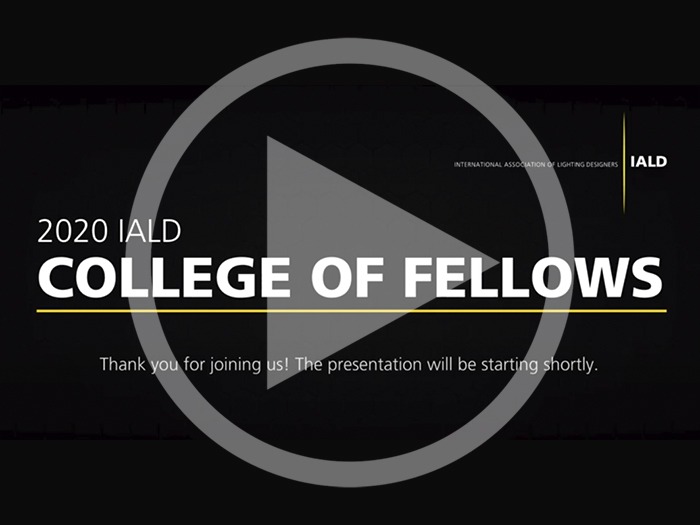
Each year, the IALD College of Fellows recognises the outstanding achievements of designers as individuals and honours model architectural lighting designers who have made significant contributions to the international design and build community. Fellowship acknowledges exceptional contributions to the IALD as an association.
The 2020 College of Fellows presentation, hosted online, saw David Ghatan, Maureen Moran and Kevin Theobald inducted into the IALD College of Fellows.
Jason Bruges Studio: Archive & Process Part 3
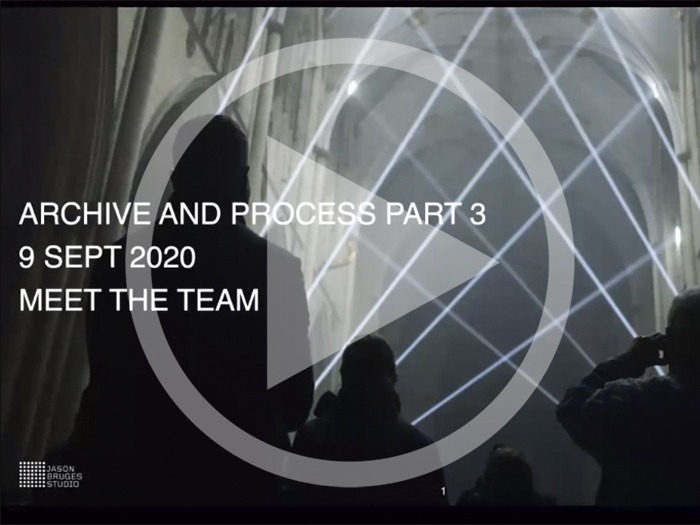
Part 3 of Jason Bruges Studio's Archive and Process series is all about the team. Jason Bruges Studio is loosely divided into a creative team and a technical team, but there is a consistent collaboration across the two departments.
In this session, we hear from Senior Designer Adam Wadey, Computational Designer Chris Waters, Creative Technologist Dhruv Kumar and Head of Production, Richard Broom. Each describe their route to the Studio, and their experiences working on recent projects.
Lightly Technologies acquired by Aamsco Lighting
(USA) – Acquisition gives Lightly Technologies more global accessibility and route to US market.
In an effort to achieve new designs in decorative lighting, Aamsco has acquired Lightly Technologies, creator of the Hikari SQ edge-lit LED panel.
Developed in 2016, Lightly Technologies founder and mechanical engineer Matt Hanbury worked on both OLED lighting and LCD smartphone displays. Combining his knowledge of these two sectors, he developed the Hikari SQ edge-lit LED panel, an ultra-thin light source with the appearance and design benefits of OLED lighting, but with the performance of LED technology.
Following the acquisition, the Lightly Technologies brand will be given more global accessibility, with strategic marketing in the US. The acquisition will also allow Aamsco Lighting to offer unique, ultra-thin lighting design, utilising both OLED and LED edge-lit panels.
Aamsco Lighting has been providing lighting solutions for companies around the world out of its factory in Summerville, SC since 1982. Its range, extending from miniature lamps to special fluorescents of all sizes, to the latest in LED technology, is suitable for a wide selection of industries, from commercial and hospitality to retail and residential.
www.aamsco.com
www.lightly.tech
On Stage: Les Éclaireurs
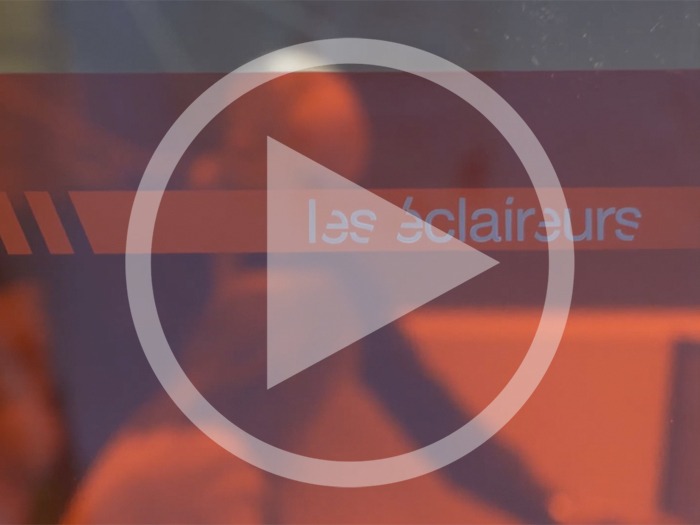
In an in-depth interview with On Stage Productions, Lucas Goy, Director of Les Éclaireurs, discusses the conceptual approach of lighting design, with a particular focus on lighting for urban areas. Throughout the documentary, Goy showcases some highlights from his own portfolio in Lyon, Paris and Porquerolles.
www.onstage.fr
www.leseclaireurs.net
IALD announces 2020 inductees to College of Fellows
(USA) – David Ghatan, Maureen Moran and Kevin Theobald inducted to College of Fellows.
The IALD has announced that three new members have been inducted to the IALD College of Fellows in 2020.
The IALD Fellow designation is awarded to members of the IALD for their valuable contribution to the art and science of lighting design, and for exemplary service to the IALD. Fellows are professional members with a minimum of 10 years of experience.
David Ghatan, Maureen Moran and Kevin Theobald were the 2020 inductees, formally inducted in an online event.
David Ghatan is deeply involved in lighting design through professional and personal pursuits, as well as his work with associations. President of CM Kling + Associates, Ghatan is the immediate Past President of the IALD, and has consistently been an active member of the association, serving as Treasurer from 2013 to 2017 and Director at Large from 2011 to 2013.
Maureen Moran began her lighting career as a lighting designer at Marriott Corporation, before transitioning to Coventry Lighting Associates as a designer. She established her form, MCLA, in 1996. Leadership, strategic thinking and mentoring have all figured prominently in her success as a designer and business owner. Moran advances the interests and mission of the lighting community through her active engagement with industry organisations such as IALD and IES.
Kevin Theobald has worked for the past 30 years in major London-based design practices, and with a background in theatre and museum lighting, boasts more than 40 years’ experience in lighting. A Fellow of SLL and an Affiliate Member of the ILP, Theobald has dedicated an enormous amount of time and expertise to the international design and build community, and especially to the IALD. He has served on the board of directors and is a Past President of the IALD, where during his tenure, Theobald oversaw the creation of the Certified Lighting Designer (CLD) program to establish a validated method for assessing the competency of designers and raise the visibility and standing of the profession.
Phos and Light Collective to co-host Light Tribe webinar
(UK) – Session to focus on Light Collective’s 10-year history and the concept of “Collectivism”.
As the UK enters another nationwide lockdown, Phos is continuing with its series of online webinars, hosted under the moniker The Light Tribe. The next session, held on 19th November at 11am GMT, will include Light Collective, who this year celebrate their 10th anniversary.
Throughout the hour-long session, Phos hope to celebrate the work of Light Collective’s Sharon Stammers and Martin Lupton, looking back on what they have achieved through their concept of “Collectivism”.
“This year saw the world adapt from in-person meetings and brainstorming sessions to the troubled antics of stuttering Zoom calls and muted Microsoft Teams discussions. It’s been a shock to us all but as we get into month 8, the importance of the design community sticking together is even more apparent,” said Phos.
“Over lockdown, we at Phos felt our passion for learning and educating could offer some form of entertainment during the forced time indoors, but when we started this jouney with our new side-arm, The Light Tribe, we were overwhelmed by the number of people who not only joined our webinars, but contributed during them, got in touch afterwards and asked how they might be able to get involved in the future.
“Designers have an amazing ability to see beauty where others see none, and we can do incredible things when we join together as a community. Our values were clear – unify, inspire and educate.
“As part of our mutual belief in the power of “collectivism”, we are co-hosting a webinar, where we will look at all of the incredible things that Light Collective have achieved over the past decade. This hour-long webinar will explore beautiful photos, the questions of collectivism, and welcomes the input of all attendees in the form of a Q&A. After all, we can all achieve more as a collective…”
Registration for the webinar is open now. Attendees can register here.
www.lighttribe.co.uk
www.phos.co.uk
www.lightcollective.net
IALD Enlighten Americas Online welcomes worldwide audience
(USA) – The online conference, held on 21-22 October, drew more than 600 attendees.
The IALD hosted its first ever online Enlighten Americas event on 21-22 October – a boutique conference for the international lighting design community, the event drew more than 600 attendees from around the world to its online platform, including designers, architects, students, educators, manufacturers and suppliers.
“While we all wish we could be together in person, our online Enlighten conferences still give us the opportunity to gather together as one strong community,” said Douglas Leonard, IALD President. “This year’s Enlighten Americas showcased a strong line up of lighting luminaries. The topics covered the challenges at hand, putting them front and centre for all of us to address and learn how to navigate. We continue to explore what inspires us, why we love lighting design and how we can support our profession’s continued growth.”
Marsha Turner, IALD CEO, added: “2020 has been a year of many ‘firsts’ for the IALD. And bringing IALD’s Enlighten conferences online this year has been another first for us. In addition to the strong content, our Enlighten events are typically a time to connect and reconnect – to catch up with long-time friends, meet new colleagues, be inspired and have a bit of fun, so we created events throughout the program that focused on connecting and networking virtually.”
Enlighten Americas kicked off with a leading international panel on What Inspires You and How is it Different Now Than When You First Started Lighting Design, where Keith Bradshaw, Susanna Antico and Steven Rosen shared their different paths to lighting design and inspirations along the way. From being an architect, to art student, to lighting designer; being inspired by the colours, water and reflections of her home on a Mediterranean island; from being fascinated by the interplay between colour and light in the theatre, to being inspired by his own team – each of them found their own lighting muse.
This year, we have seen the importance of diversity and inclusion discussions. Edward Bartholomew, Lisa Reed and Nelson Jenkins continued this discussion, sharing the impact of racism and colonialism in the lighting industry in their session, Multicultural Inclusion: Reflecting the Communities We Illuminate. Here, they showed how firms can thrive through diversity and inclusion by suggesting ways to expand the talent pool.
Other presentations across the two-day event came from Randy Burkett, Carrie Hawley, Andrew Mackinnon, Victor Palacio, Charles Stone, Colin Ball, Monica Lobo and Gerd Pfarré.
All presentations from the event are available to catch up on the IALD YouTube page here.
Following on from Enlighten Americas, the IALD will host Enlighten Europe Online on 18-19 November. Registration for this event is still open, and participants can register here.
Seoul Semiconductor and Future Electronics to hold webinar
(Europe) - Webinar, titled Get Out of the Darkness, to be held on 5th November at 10am CST.
Seoul Semiconductor and Future Electronics are hosting a webinar this week, entitled Get Out of the Darkness.
The session, held this Thursday (5th Nov) at 10am CST, will see Marc Juarez, Technical and Marketing Director of Seoul Semiconductor, and Francois Mirand, FLS Technical Director, discuss a number of the lighting industry's hot topics, from Human Centric Lighting to ecodesign regulations and their impact on lighting products.
Registration is still open for the hour-long session, which will include a Q&A.
More information about how to register can be found here.
www.seoulsemicon.com
www.futureelectronics.com
Signify appoints new CEO for UK and Ireland
(UK) – Stephen Rouatt promoted to CEO after almost five years with Signify.
Signify has announced the appointment of Stephen Rouatt as the new Chief Executive Officer for Signify UK and Ireland.
Rouatt has been with Signify for almost five years, bringing more than 20 years of industry and professional services experience across a range of sectors to the CEO role. With Signify, Rouatt was previously Group Head of the Strategy, Alliances & Market Insights team, where he was responsible for setting the business’ overall direction, defining Signify’s IoT and M&A strategies (including the acquisitions of Cooper Lighting Solutions, WiZ and Once/iLOX), leading the company’s Alliances functions and launching several transformation programs. Rouatt has also been closely involved in the development and acceleration of several of Signify’s sustainable growth businesses.
Based out of the UK, Rouatt replaces Joao Pola, who will become the head of Signify’s 3D Printing division.
Of the appointment, Rouatt said: “I feel immensely privileged to be appointed CEO of Signify UK&I. It has been a pleasure to see the transformation of the lighting industry as it moves to more connected, intelligent solutions, as well as be part of a business that is a true champion of sustainability with achievements such as our global carbon neutrality announcement this year. I am excited to build on the brilliant work of the UK&I team and wish Joao Pola the best of luck as he begins a new chapter for Signify.”
Prior to Signify, Rouatt was a Managing Principal at ING Bank, focused on strategy and innovation, and helping launch several fintech ventures. He spent 10 years split between McKinsey & Company in its Digital practice, and Accenture in its technology strategy group based in the UK, serving large corporate clients across North America, Europe, Africa and Asia.
Rouatt will take over the CEO duties in November, and will report to Frank van der Vloed, Market Group Leader for Europe.
Surface Design Show 2021 cancelled
(UK) – The show, expected to take place February 2021, has been postponed to 2022.
Surface Design Show organisers have announced that the 2021 edition of the show has been cancelled.
Originally due to take place on 9-11 February 2021, the next edition of the event will now be held on 8-10 February 2022.
Christopher Newton, Event Director, said: “Over the last months, we have worked hard with our industry colleagues to create an event that we felt could be held both successfully and safely. Our venue, the Business Design Centre, even held a prototype event to reassure the Government that we could work within their guidelines for holding trade shows.
“Unfortunately, the recent spike in Covid-19 cases in the UK has forced the Government to delay the re-opening of trade shows.
“Of course, we are hugely disappointed that next year’s show will not take place and we have been overwhelmed by the support of our exhibitors, however we look forward to bringing everyone back together for 2022, which promises to be better than ever.”
Newton added that the announcement will not affect the annual Surface Design Awards – more than 100 projects have been entered into the 2021 awards, with the first step of judging taking place at the end of October, and finalists being announced in early November. The Awards presentation will take place in February 2021.




